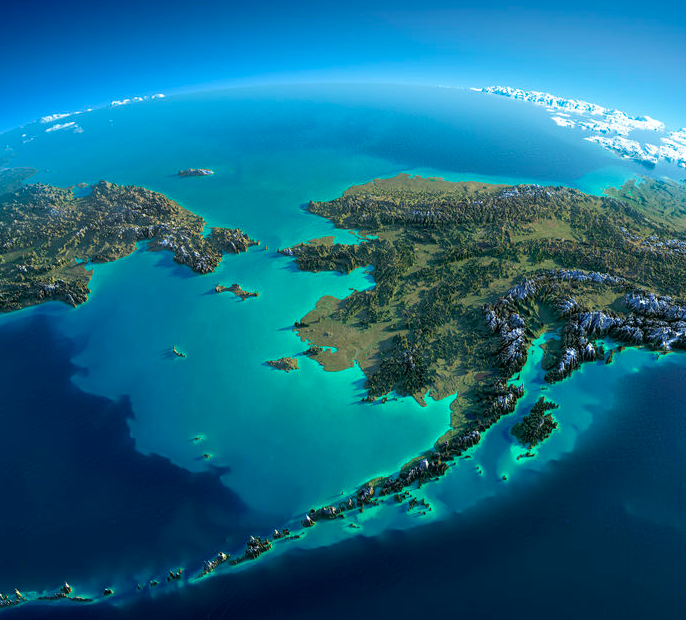By KASSIE ANDREWS
The fourth annual Alaska Sustainable Energy Conference began with a pre-conference workshop led by Dr. Erin Whitney, director of the U.S. Department of Energy’s Arctic Energy Office. As part of the DOE’s ongoing effort to “bring the Arctic to DOE and DOE to the Arctic,” Whitney opened the event by introducing the Arctic Energy Ambassadors, a cohort of 12 professionals selected to represent each of Alaska’s regions.
Launched in 2023, the Arctic Ambassador Program—developed with the Denali Commission and Alaska Municipal League—seeks to build regional energy leadership and support clean energy transitions across Alaska. Ambassadors help link their regions to DOE resources and expertise. Around half of the ambassadors in the lineup referenced regional project goals of expanding renewable energy such as wind, solar, electric vehicles, and batteries, with none mentioning coal, oil, or gas. The Cook Inlet ambassador, Cassidi Cameron, from the state’s most gas-reliant region, emphasized a resiliency project centered on renewables and food security.
Following Whitney’s remarks, the event transitioned to a panel titled “Perspectives from Headquarters,” featuring representatives from major DOE offices that oversee or collaborate with the national laboratories. Presentations included the Office of Indian Energy Policy and Programs, the Office of Energy Efficiency and Renewable Energy (EERE), the Office of Science, and the Office of International Affairs.
The Office of Science, which oversees most of the DOE’s 17 national laboratories, emphasized its work in fundamental research, advanced computing, and climate-related field studies in the Arctic. This includes research sites in Alaska focused on permafrost, sea ice, and atmospheric systems. The office also utilizes supercomputing to model the viability of energy infrastructure placement, such as Small Modular Reactors (SMRs), in Arctic climates.
EERE highlighted projects supporting energy efficiency and cold-climate housing in Alaska’s rural communities. Lou Hrkman cited active partnerships in more than 15 Alaska locations under the Energy Technology Innovation Partnership Project, formerly known as the Energy Transitions Initiative Partnership Project.
The Office of Indian Energy emphasized Alaska’s major role in its portfolio, with 28 percent of its project funding and 42 percent of its technical assistance directed to Alaska Tribes. The office supports planning and implementing viable energy projects with tribal groups and other DOE labs.
The panel noted strong geothermal potential in Alaska, a push to streamline NEPA reviews using AI from multi-year timelines to 28 days and cybersecurity concerns over Chinese-made solar inverters.
A highlight of the event was the participation of directors from nine of the 17 national laboratories, each offering brief overviews of their lab’s relevance to Arctic energy development. Notably, during his Jan. 15, 2025, Senate confirmation hearing, DOE nominee Chris Wright referred to these national laboratories as the “crown jewels of our nation’s scientific research and technology innovation,” each offering brief overviews of their lab’s relevance to Arctic energy development:
- Idaho National Laboratory (INL), the nation’s nuclear laboratory, highlighted its work on Arctic energy security, supporting microgrids, and enhancing military base resilience.
- The National Renewable Energy Laboratory (NREL) presented a partnership with the Kuskokwim Corporation to revitalize regional timber and milling industries for efficient housing construction. Absent was any mention of NREL’s research supporting the feasibility of a 100 percent renewable power grid by 2035.
- Pacific Northwest National Lab shared its work in predicting “landfast” ice. That is, ice attached to the shore and a separate project in Sitka deploying sensors to better forecast snowmelt and rainfall for their hydropower operations.
- Ames Laboratory presented its breakthroughs in rare earth recovery from electronic waste and its leadership of the Critical Materials Innovation Hub.
- Sandia National Labs highlighted its “Vanilla” unmanned aircraft system, noting a 39-hour continuous endurance flight in Alaska’s Oliktok airspace.
- Los Alamos National Lab focused on AI, advanced Earth system modeling for infrastructure and coastal planning and cryosphere research supporting national security agencies, like the Coast Guard and Navy.
- National Energy Technology Lab (NETL) focused on emissions reductions for hydrocarbons, critical mineral recovery, and advanced carbon management. In collaboration with the University of Alaska Fairbanks, NETL is also studying the feasibility of converting the Trans-Alaska Pipeline System to transport liquid hydrogen instead of crude oil—part of a broader effort to transition legacy infrastructure toward long-term decarbonization goals.
It was also announced that 12 of the 14 microgrid projects selected under the DOE’s $8 million Community Microgrid Assistance Partnership (C-MAP) were based in Alaska. These projects received over $4.3 million in direct funding and aim to lower energy costs and increase reliability in rural, often diesel-reliant communities.
As Alaska continues to play a central role in national energy innovation, this pre-conference workshop underscored DOE’s intent to align federal energy policy with regional priorities. However, that direction appears to lean heavily on decarbonization frameworks, raising questions about how Alaska’s hydrocarbon-dependent realities will be addressed in the years ahead.

Anytime you have the Alaska Municipal League and the Denali Commission in the same sentence, you have a capital letter oxymoron.
More like socialists United.
Stupid is as stupid does! Lots of hair brain activity there.
Looking at who was appointed,its more of a ” NO Energy !!!!” Conference
Who do they think is going to pay for this green wet dream? After all these “studies”, their religion of a communist energy-less society is far more important than reality.
I got bureaucracy fatigue just reading that. So much empire building. Someone fire up the bulldozer.
Bull doger